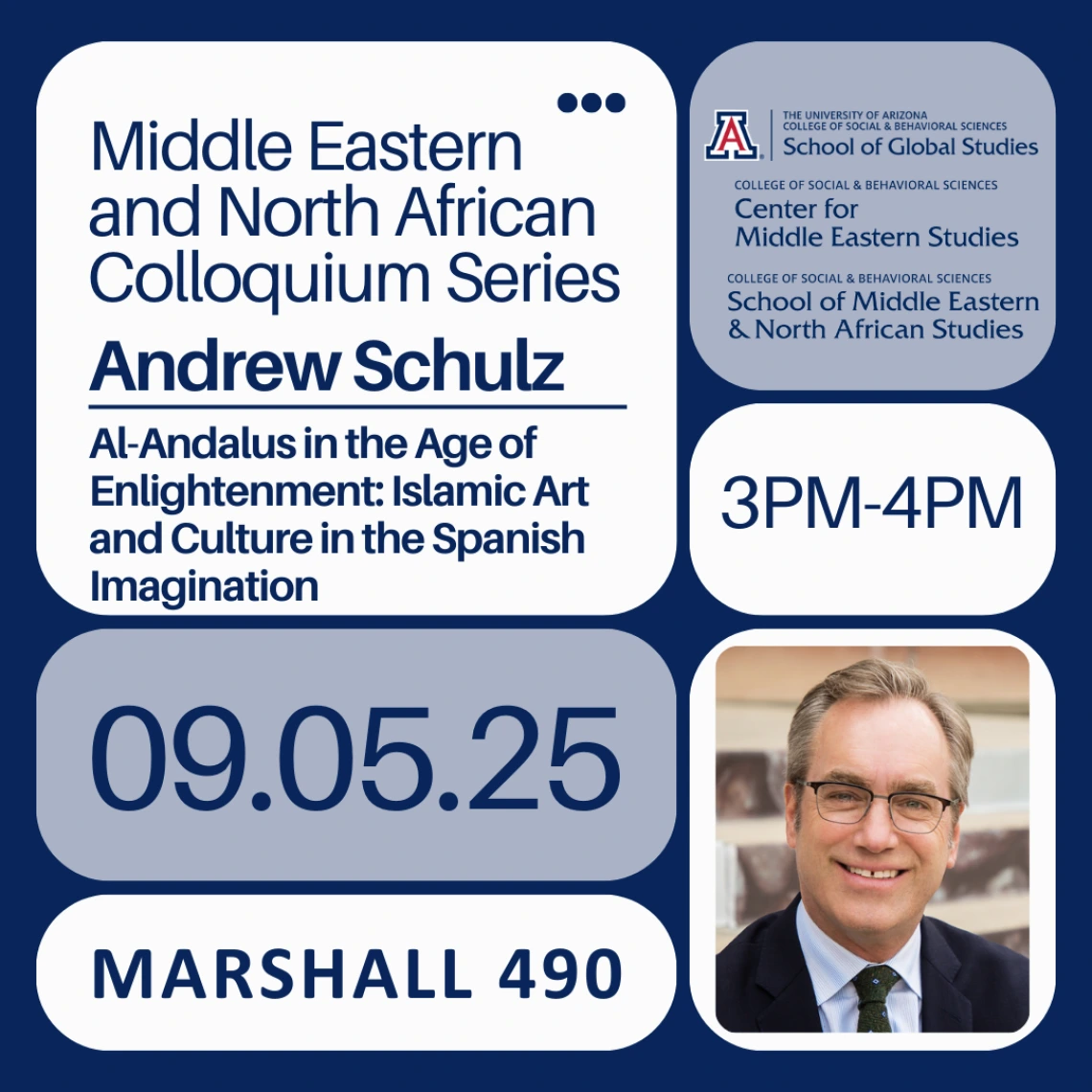Al-Andalus in the Age of Enlightenment: Islamic Art and Culture in the Spanish Imagination

When
Al-Andalus in the Age of Enlightenment: Islamic Art and Culture in the Spanish Imagination
Bio: Andrew Schulz is a leading scholar of eighteenth- and nineteenth-century Spanish art. His work has appeared in flagship journals, edited volumes, and exhibition catalogues and has been made possible by fellowships from the NEH and the Getty Foundation, among others. His first monograph—Goya’s ‘Caprichos’: Aesthetics, Perception, and the Body—was awarded the Eleanor Tufts Prize by the American Society for Hispanic Art Historical Studies. His current research focuses on the "afterlife" of Islamic art and culture during the Spanish Enlightenment. Prior to joining the University of Arizona, Schulz held faculty appointments at Penn State, the University of Oregon, and Seattle University. At the U of A, Schulz served as Dean of the College of Fine Arts and Vice President for the Arts from 2018 to 2025. In Fall 2026, he will assume the role of Professor of Art History in the School of Art.
Abstract: The middle decades of the eighteenth century witnessed the emergence of a keen interest in Spain’s Islamic heritage. Working from a secular intellectual perspective grounded in Enlightenment principles of measurement, classification, and comparative analysis, Spanish artists, writers, and government officials turned their attention as never before to monuments created during the nearly eight centuries of Muslim rule on the Iberian Peninsula, which began in 711 and came to an end in 1492. The most significant exemplar of Enlightenment fascination with the Islamic past is a suite of thirty-one engravings entitled "Antigüedades árabes de España" (Arabian Antiquities of Spain). Although never fully completed in its intended form, "Antigüedades árabes de España" offers an invaluable point of entry into eighteenth-century conceptions of Muslim Iberia, and, more generally, into the role of the arts and state-sponsored institutions in constructing national identity during the Spanish Enlightenment. Its broader significance stems from the fact that this publication is the most sustained and sophisticated effort in the early modern period to examine and understand the art and architecture of al-Andalus (as Muslims had referred to Iberian lands under their control). Indeed, the academy’s project was the most ambitious European effort up to this point to document any aspect of the arts of Islam. As such, it stands as a critical yet under appreciated landmark in the reception history of Muslim Iberia, and of Islamic culture more generally.

